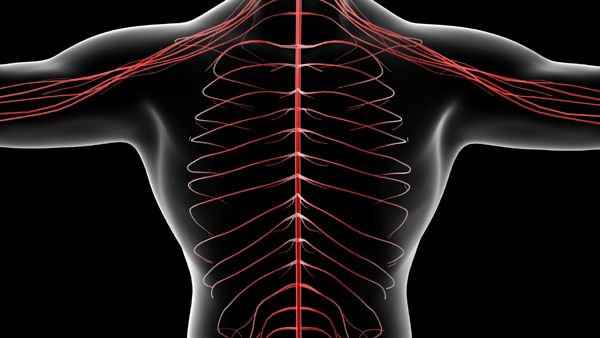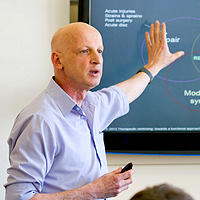 ▪ Two months access to lecture video (60 min) and extensive course material
▪ Two months access to lecture video (60 min) and extensive course material
▪ Certificate for up to 5 CPD hours Self Directed Learning
Cost: £14.95
In this workshop Dr. Eyal Lederman will explore the role of proprioception in human movement, how this system is affected and recovers in musculoskeletal and pain conditions and how this recovery can be enhanced in rehabilitation.
Proprioception is an area in physical therapies and training where facts are mixed with therapeutic myths to the detriment of effective management. This workshop will aim to untangle this mix and provide the participants with a better understanding of how to work more effectively with proprioception.
Other topics explored in the workshop include:
▪ Can the motor system be controlled by proprioceptors, i.e. control of muscle tone?
▪ Are there proprioceptive specific exercises?
▪ Is fascia the largest sensory organ in the body?
▪ Can proprioception improve/recover with manual therapy?
Why are physical therapists interested in proprioception?
1. What is proprioception?
Where are proprioceptors found?
Which receptors are more dominant in movement?
Is fascia the largest sensory organ in the body?
2. What do proprioceptors signal?
Components of proprioception
Active and passive proprioception: which is better?
Sense of self, ownership of the body and body image
3. Role of proprioception in motor control
Can motor system be controlled from the periphery by manual therapy?
Sensory memory
Motor and sensory coupling
Sensory specificity – why sensory transfer is unlikely
4. Proprioception as complex sensory ensembles
Whole and goal vs fragment and tissue specific
Is receptor specific stimulation possible or clinically useful?
5. Proprioceptive loss
Peripheral & Central mechanisms
MSK injury and fatigue
Does it lead to further injury and future degenerative changes?
Can injuries be prevented by enhanced proprioception?
6. Proprioceptive recovery
Central and peripheral mechanisms
Can manual therapy help?
7. Proprioceptive rehabilitation
Are there proprioception specific exercises?
Prevention of injury and progressive degeneration

